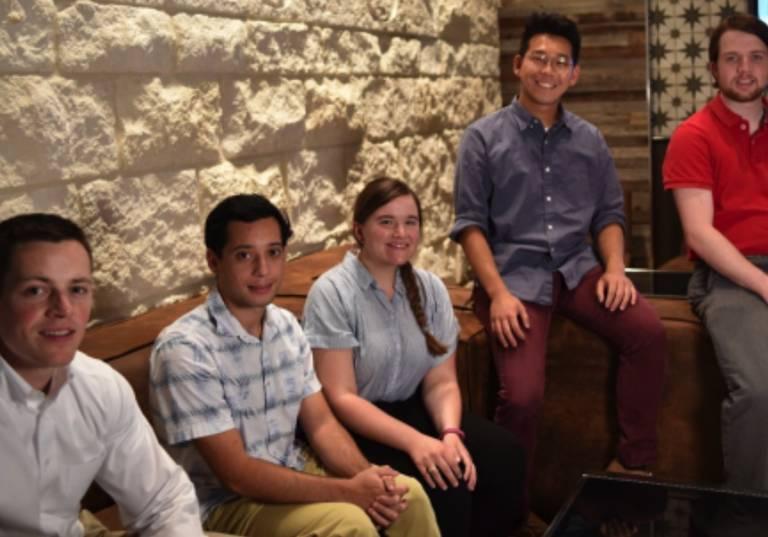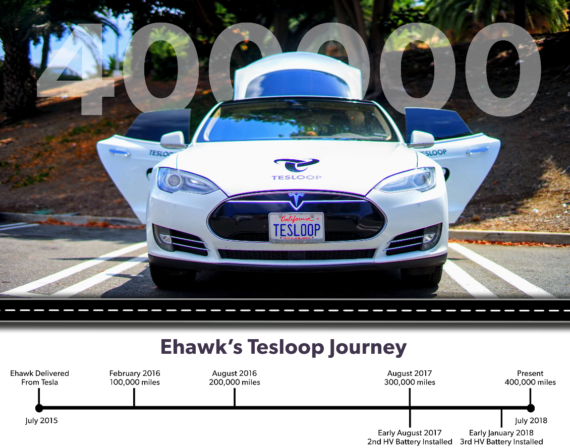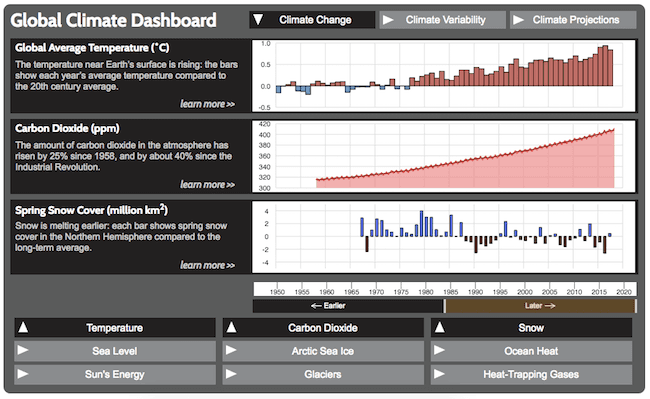Finding America’s Healthiest Communities


There has been a lot of discussion in recent years over what makes a healthy community. The United Nations’ Sustainable Development Goals highlights a few of the basic components: eradication of poverty and hunger; access to quality education and infrastructure that promotes healthy living, a strong economy and resilient communities.
But the extent to which those goals are reached often varies from country to country and community to community. Even the United States, arguably among the most affluent countries in the world, is characterized by disparity when it comes to how, and to what extent, communities meet those goals. In fact, the U.S. is often cited as having the lowest life expectancy rate among industrialized nations, despite the fact that we spend much more than our international peers on health care services - $3.2 trillion, according the Centers for Medicare and Medicaid Services.
To showcase the communities in America that are doing the best job of improving residents’ health through strategic partnerships, expanded public health assessments and education programs, the Aetna Foundation and U.S. News & World Report released the Healthiest Communities inaugural ranking in March 2018 - a detailed health report of U.S. communities. Healthiest Communities examines 3,000 counties across the country, offering a snapshot of just what those values look like at home: How well communities succeed in meeting health care needs; what education looks like in their neighborhoods; how well equity is addressed, the locality’s economic vitality and public safety record and so on.
Dr. Garth Graham, president of the Aetna Foundation and vice president of community health for Aetna said the point of the report was to provide comparative data that local residents and community leaders could use to analyze the health status of their community.
“We recognize the fact that most of health care occurs outside of doctor’s offices and that helps define how long people live,” said Graham. “We often say your zip code matters more than your genetic code – that’s why your community is so important.”
“Our collaboration with U.S. News is a way of defining, or helping to define, the national conversation – the factors within your community that help to make you healthy.”
The counties were evaluated according to ten categories that had been determined to drive health outcomes, including a community’s economic vitality and ability to guarantee intrinsic qualities like public safety and access to food and nutrition.
Take Madera County and Mono County, CA for example. Separated by Yosemite National Park, Madera County can be found to the west and Mono to the east. Although these counties are close in proximity, they are miles apart when it comes to health.
Mono County has a high-performing economy and easily outscores Madera, an urban town with an up-and-coming economy, in most of the ten categories used in the ranking. The most notable differences are environment, equity, infrastructure, public safety and population health – particularly mental health. Mono County ranks No. 42 nationally, while Madera is unranked.
The goal in creating the Healthiest Communities ranking is not just to recognize communities that are already making significant progress toward building healthy communities, but to inspire change in the way communities think about and pursue improvements in public health. While no two communities are the same, all communities can learn about best practices in their own backyard and across the country, then apply these lessons to improve the health of their residents.
Companies Take on Climate Change with "We Mean Business"


The We Mean Business coalition was formed to organize a critical mass of the business world to make progress on climate change. With its no-nonsense brand name, formidable numbers, and world-class leadership, the coalition is poised to be a dominant player in directing businesses toward taking stands on strategies and practices that define climate change as a business opportunity, not just an environmental disaster.
And quite a group it is, bringing together the memberships, networks, and missions of seven international nonprofit organizations, all major players in driving environmental policy through business activities: BSR, CDP, Ceres, The B Team, The Climate Group, The Prince of Wales Corporate Leadership Group, and WBCSD. The association’s mission statement sets a very ambitious goal: “...to ensure that the world economy is on track to avoid dangerous climate change by 2020 while delivering sustainable growth and prosperity for all.”
That mission is a measure of two conclusions. One, that governments are failing in their historic role as policy makers. Two, that only when citizens worldwide understand that increased prosperity for all will be possible if the global economy is built on progressive practices that consider many factors, including the environment.
The coalition’s bold stand has attracted a €40 million grant from the IKEA Foundation, a strong gesture of support from a company that has positioned itself as a pioneer in renewable energy and GHG-emissions reduction.
The June update from We Mean Business highlights a number of initiatives, the most significant of which is the Declaration of Ambition. In this statement, more than 20 countries—including the UK, Canada, Germany, and Sweden—outline a challenge to all the signatories of the Paris Agreement to “raise the ambition” of their national climate plans. The goal is to inspire others to step up their commitments in the face of the inertia, if not the outright hostility (c.f. the current US administration) of government.
That’s the thing about coalitions, they’re contagious—they can inspire action through collaboration that would be much more difficult when taken by individual actors.
As noted in a previous BTS Newsletter, climate change is now at the top of the agenda for S&P 500 companies. We may not need a weatherman to know which way the wind is blowing, but We Mean Business is a good guide for companies in navigating today’s stormy socio-political seas toward profits as well as the collective good.
Originally published in 3BL Media's Brands Taking Stands Newsletter.
Why the Energy Businesses of the Future will Focus on Re-using Energy and Why This is the Only Way We’ll Slow Climate Change


By José Melico
Much of the debate around climate change has focused on reducing our carbon footprints, in particular by cutting our energy usage.
However, the future won’t just be about saving energy, it will be about looking at ingenious ways to reuse energy that would otherwise be wasted. We need to find new sources of energy and also find inventive ways for recapturing and reusing it.
Massive amounts of energy are being lost when we heat homes, businesses and other buildings; the world over, energy wastage such as this is happening on a huge scale. And this needs to change if we’re to slow climate change and create a future with a sustainable energy system.
More energy is wasted than used
In the UK alone, more than half of the energy produced is wasted at the source. According to a 2015 report by the Association for Decentralised Energy, 54 percent of heat energy generated at power plants escapes before it can be turned into useful electricity,.
This wasted energy is worth £9.5bn per year. Per person, that’s equivalent to more than half the average UK annual electricity bill – about £592.
Significant heat energy is lost in homes and buildings that are not energy efficient as well. This is why the 2012 Energy Efficiency Directive requires all new homes in the EU to have nearly zero-energy building (NZEB) status by 2020, and all new public buildings to be NZEBs by 2018.
According toTheGreenAge, a UK energy saving advice website, 35 percent of heat energy is lost in the home through the walls and gaps in and around windows and doors. 25 percent is lost through the roof, and an additional 10 per cent is lost through the floor.
Obvious ways of reducing this kind of home energy wastage include: insulation, sealing gaps, switching to more efficient modern boiler systems, and installing double glazed windows.
Another, often overlooked problem is water heat wastage.
Around 15-30 percent of a typical home energy bill is spent on heating water, while almost 90 percent of the energy used to heat shower water is wasted.
This inspired me to design Zypho, a water heat recovery device that’s installed under a shower tray or bathtub to capture and reuse around 10°C of lost heat energy that would otherwise go down the drain.
This energy is then reused to heat the cold water travelling to the shower tap, cutting carbon footprints and reducing energy bills by up to 30 per cent.
Energy recovery is also occurring in different forms, and on a larger scale. For example, in the Swedish capital, the Stockholm Data Parks project is harvesting heat energy generated from the masses of computers in its data centres to help heat the homes of over 900,000 people in the city.
The cold water used to cool the air in data centres to stop servers from overheating is, in turn, heated-up itself. But rather than wasting this now-hot water, it is distributed back to a cooling and heating agency and redistributed for heating homes.
These two examples, Zypho and Stockholm Data Parks, illustrate how a combination of small scale units and large industrial scale projects can help us get more from the energy we are currently using. In the future, this heat recovery will be the key to reducing our energy use.
New and unlikely ways to generate energy
As well as reusing wasted energy, pioneers are also looking at using energy from some unlikely sources.
For instance, Belgian company Turbulent is pioneering whirlpool turbines, which harvest river or canal water to provide low-cost energy to small rural communities, 24 hours a day.
It’s even possible to harvest piezoelectric energy – electricity generated by the use of pressure – as the Institute of Physics (IoP) explains.
One example involves using the force required to press a button to charge small, low-power electronic devices, thus replacing the need for batteries. This would also cut down the use of batteries, which are already complicated to dispose of as they contain chemicals and metals that are harmful to the environment, and to humans.
On a larger scale, piezoelectric floor tiles could harvest “the kinetic energy generated by the footsteps of crowds to power ticket gates and display systems”. One company making this a reality is Pavegen which has installed smart floors and pavements in a number of locations.
As well as harvesting otherwise wasted energy, we will also see a shift towards the reuse of waste itself.
Marcus Gover, director at the UK advocacy group WRAP, told the Guardian that by 2025, waste disposers “won’t be burying or burning people’s rubbish as they do today”, they will instead be returning “valuable resources to manufacturers”.
One solution, the Guardian highlights, “is turning waste into energy” – a market predicted to be worth $37.64bn by 2020.
The article also references U.S. biotech firm, LanzaTech, “that uses patented microbes to convert carbon-rich waste into biofuel via a gas fermentation technology” and Novozymes, a Danish biotech firm that uses “an enzyme-based solution that converts used cooking oil or other lower grade oils into biodiesel”.
All around the world, solutions are being tried and tested to create a greener and more energy efficient future. Some are city-wide and large scale, others are in small communities or even within individual homes. Pioneers are crafting new energy efficient solutions, as well as promoting a whole new way of thinking.
These steps may seem small and insignificant on their own, but by implementing many small steps at once, we can recapture and reuse a huge amount of energy that would otherwise be wasted heating our atmosphere. This new mindset will be key to solving the future energy challenges which will face us.
José Melico is Founder, Zypho, a water heat recovery device that reduces shower water heating energy bills by up to 30 per cent and improves energy efficiency.
Photo: Zypho
Citations
54 per cent of heat energy generated at electricity plants escapes before it even reaches households, according to a 2015 report by the Association for Decentralised Energy:
https://www.lowcarbonenergy.co/wp-content/uploads/2015/less-waste-more-growth/lwmg.pdf
2012 Energy Efficiency Directive:
http://eur-lex.europa.eu/legal-content/EN/TXT/?qid=1399375464230&uri=CELEX:32012L0027
TheGreenAge: Energy lost in the home stats: https://www.thegreenage.co.uk/where-am-i-losing-heat-home/
Stockholm Data Parks project harvesting heat energy generated from the masses of computers in its data centres to heat 900,000 homes in the city:
http://www.bbc.com/future/story/20171013-where-data-centres-store-info---and-heat-homes
Belgian company Turbulent are pioneering whirlpool turbines, which harvests river or canal water to provide low-cost energy to small rural communities, 24 hours a day:
http://uk.businessinsider.com/whirlpool-turbine-water-energy-turbulent-belgian-green-energy-2018-2
Harvest piezoelectric energy – electricity generated by the use of pressure – the Institute of Physics (IoP):
http://www.iop.org/resources/energy/materials/page_50300.html
The Guardian, waste reuse:
https://www.theguardian.com/sustainable-business/2015/feb/23/future-of-waste-five-things-look-2025
Booz Allen Interns Build Virtual Reality Training Tools for Real-World Challenges


By Booz Allen Hamilton
Put down your headset: Virtual reality (VR) and augmented reality (AR) aren’t just for gamers anymore. More and more we’re using immersive technology for a variety of real-world scenarios—from performing surgery in a virtual operating room to training military personnel. The goal is to present a dynamic, yet artificial environment that replicates the real world.
At Booz Allen, three teams of Summer Games interns are using VR and AR, too. They’re developing innovative solutions to improve airport security, train Air Force drone pilots, and help emergency preparedness. In exploring how to use these technologies, they’re also integrating data science and artificial intelligence (AI) to improve human-centered experiences.
Learn more about the teams’ work in their own words:
Enhancing Airport Security with VR Training
“We’re developing a VR tool to improve airport security by enhancing the on-the-job performance of airport screeners nationwide. To improve screening skills of the agents and reduce costs, our implementable VR training program has different hands-on training modules,” says Ryan Holman from the Washington, DC-based team. “In a widely published 2015 report assessing airport security screening, banned items, like explosives and weapons, got through the screening process in 67 out of 70 tests. In addition, the existing agent training process is very expensive. Integrating artificial intelligence allows us to tailor training scenarios to fit each person’s strengths and weaknesses. Virtual reality is a viable and effective solution to improve officer safety and skills. The success of our tool serves as a benchmark for other federal VR training programs.”
Learning to Fly in a Virtual Cockpit
“Airmanship training in your pocket—that’s what our team is developing. It’s a mixed-reality application that projects a high-resolution, 3D model of a Texan II aircraft cockpit,” says Elizabeth Tate of the San Antonio, Texas-based team. “About 1,400 airmen train annually in San Antonio to become Air Force drone pilots, studying the foundational skills they need to fly drone-type aircraft upon deployment. While they’ll never sit in the real aircraft, they must master all the critical elements of aviation. Using our app on any Android smartphone, airmen can sit in the virtual cockpit—touching and interacting with the aircraft’s gauges and controls. It helps them hone their skills off base, at home, or anywhere. We’re also expanding how the app uses AI to track and respond to user metrics, tailoring the experience for the pilot’s knowledge level. We hope our self-guided learning app will become more readily available to all armed forces branches.”
Improving Emergency Preparedness with VR Simulation
“Using VR technology, we’re creating an emergency escape simulator to help transform the current emergency training landscape,” says Kaitlyn Neitz of the Norfolk, Virginia-based team. “With the increase in active-shooter incidents, it’s clear that people of all ages are generally unprepared for emergencies. Lockdown drills conducted at offices, university campuses, and schools across the country are often ineffective—people don’t take them seriously, don’t pay attention, or fail to cooperate. With an accessible immersive experience, our simulator improves training methods for emergency incidents where people are in danger. Here’s how it works: Users are immersed in a maze-like situation that tests reaction times and if they perform the right processes under pressure. In the first phase, users focus on escaping a building to get to safety. As users advance through the simulation, we assess their emergency preparedness. Afterwards we give them feedback on what they did right or wrong.”
Learn more about how Booz Allen’s Summer Games interns are empowered to change the world.
Would a National Apprenticeship Policy Solve the U.S. Labor Crunch?


In Scotland, the central government provides significant support for workforce development through the Skills Development Scotland agency. Among other missions, SDS directs Scotland's national apprenticeship programs and prioritizes areas of focus. That's a far cry from the US, where employers act on a piecemeal basis to cultivate the workforce of tomorrow. That situation is not likely to change, but U.S. employers can still pick up some useful pointers by taking a look at the SDS approach.
Apprenticeships in Scotland
Skills Development Scotland launched in 2008 on the heels of the global financial crisis, as a merger between several existing career and workforce agencies. It takes a holistic approach to the national workforce with a focus on diversity, inclusion and opportunities "for those who need it most." In a 2017 report, SDS Chief Executive Damien Yeats noted that Scotland's economic recovery since 2008 has been impressive overall, but the strong growth masks a deepening wage gap due to the rise of part-time jobs, temp work and self-employment.
To address this gap, SDS offers three basic types of apprenticeships that aim at getting workers a good start in the labor force along with prospects for career growth.
Foundation Apprenticeships are work-based programs for students still in secondary school, leading to college or non-college careers in 12 fields that match growth areas in the Scottish economy.
The emphasis is on helping students develop broad or "soft" job skills before leaving school. The program also helps employers spot talent. SDS cites Stephen McNab, head of the apprenticeship programs at GE Caledonian:
Foundation Apprenticeships give us a solid talent pipeline a year in advance. We get an idea of peoples’ potential a year earlier and, without a doubt, it helps us find the right people.Graduate Apprenticeships launched in 2017 with the goal of creating academic opportunities for people already in the workforce. The focus is on areas of study in high demand fields that all but guarantee career advancement, thereby lowering the risk of investing time and money in a higher degree.
Ian McDonald, contracts manager at the construction firm Morgan Sindall, notes that this tailored "earn-as-you-learn" approach has "the potential to develop well-rounded individuals who are both academically and professionally qualified."
Both of these programs can be viewed through the lens of diversity and inclusion, and that aspect of social engineering comes out more clearly in the third program, Modern Apprenticeships.
The Modern Apprenticeships program provides financial support for specific on-the-job training in 80 targeted career fields, some of which lead to the equivalent of a degree.
In its goals for 2015-2020, SDS paid particular attention to improving diversity in the Modern Apprenticeships program. That resulted in the development of a detailed Equalities Action Plan:
This Equalities Action Plan outlines the challenges to be addressed, and the actions which our organisation will undertake with partners specifically to improve the participation of disabled and Black Minority Ethnic (BME) groups and care leavers in Modern Apprenticeships, as well as addressing gender imbalance within the uptake of occupational frameworks. Whilst some specific objectives exist for these four groups, the plan will also embrace the wider goal of improving equality of access for all.
How apprenticeships open doors
For an example of the diversity opportunities opened up by Scotland's apprenticeship program, take a closer look at GE Caledonian. In celebration of Apprenticeship Week last March, the company's Prestwick Aerospace division highlighted the story of Tracy Govan.
After 11 years of spinning her wheels in a supermarket job, Govan switched gears and entered an apprenticeship program through Ayrshire College as an engine mechanic at Prestwick. Now her future looks brighter:
...The benefit of being an apprentice is that you can put the theory you learn at college into practice and learn as you go. Actually being involved in the work is great. I’ll get a recognised qualification as well as trade papers.
It’s amazing the opportunities that are out there working for a multinational company like GE Caledonian. Once I finish my apprenticeship, I’d like to continue working for GE Caledonian, the opportunities are definitely there.
The program has worked out for GE as well. Last month the company announced that it has taken on a new group of 14 apprentices, with 13 coming from Ayrshire. McNab underscores the benefits of close communication with its academic partner:
It’s key to our business that we have these links. We know they’re reliable, and the candidates we get from the College are top notch.Ayrshire College is great at coming along and asking what our needs are, finding out if the course meets our requirements and what, if anything, could be changed. I value those interactions as the College is looking at how we can strengthen this relationship, how can we build on it and how can we move forward.
Why start your own apprenticeship program?
Here in the US, the corollary to the Modern Apprenticeship program consists of vocational high schools and community college. The situation is complicated, though, by the existence of for-profit colleges and other private sector educational enterprises -- Trump University being one high profile example -- with a history of making false promises to students. Aside from the loss of time and opportunity, students are further burdened with school loans.
The Obama Administration worked to curb some of the most egregious abuses in for-profit schools, and placed more emphasis on public community colleges for career advancement. However, that progress is being undermined by the Trump administration.
A number of other factors have combined to weaken the prospects for a strong national apprenticeship policy in the US, especially in terms of addressing the wage gap.
U.S. labor unions, for example, have been an important source of apprenticeship programs in the US. Toward the later half of the 20th century they were credited with impacts on income equality, diversity and the assimilation. However, union membership, and its political influence, has been waning for generations.
Other factors include the decline in traditional manufacturing jobs and the emergence of next-generation manufacturing, the rise of the gig economy, and the practice of taking on part-time staff and vendors rather than putting more full time employees on the payroll. In addition, burdensome scheduling practices like "on-call" can also prevents part-time employees from supplementing their income.
The absence of a coordinated plan for workforce development is already beginning to impact employers in the US. According to a new report from Moody's, employers in key sectors ranging from truck driver to software developer are struggling to fill vacancies, and the situation is all but certain to grow worse.
How to start your own apprenticeship program
In the absence of a formal, national apprenticeship program, U.S. businesses are left to their own devices. This is not necessarily a crippling problem for large companies that can dedicate an entire office to coordinating workforce development with local schools and other public resources, in addition to training and mentoring employees in-house.
Left out in the cold are smaller companies with fewer resources. The absence of support could have supply chain consequences that ripple out to impact larger companies.
In recognition that the apprenticeship issue needs to be addressed universally, the leading companies Alcoa, Dow and Siemens partnered with the Manufacturing Institute (an affiliate of the National Association of Manufacturers) to produce a step-by-step manual titled, "Employers' Playbook for Building an Apprenticeship Program."
The Playbook makes a strong case for building partnerships with community colleges, mirroring Scotland's approach:
...While private employers are ideally equipped to define the skills they need to succeed, they cannot go it alone. Therefore, the apprenticeship model, which brings together community colleges and employers, is rapidly taking hold as a viable training approach that can quickly and effectively build the manufacturing workforce of the future.Alcoa, The Dow Chemical Company, and Siemens Corporation – all active participants in the Obama Administration’s Advanced Manufacturing Partnership (AMP) – have successfully established apprenticeships in their U.S-based facilities for years. And they have reaped the benefits of these programs, namely as a way to develop a highly skilled and qualified workforce that is certified, highly motivated and work-ready.
Last spring the Manufacturing Institute followed up by co-authoring a new proposal for coordinating employer workforce initiatives on a national level titled, “Quality Pathways: Employer Leadership in Earn and Learn Opportunities.”
Like the Playbook, the new proposal highlights the importance of government support, including the development of state and federal incentives for employers:
This situation will not fix itself, and employers cannot fix it alone. We need everyone—businesses, workers, government, and our nation’s education and training providers—working together to solve the challenges of our time.
The ambitious proposal is aimed specifically at the manufacturing sector, but its principles could be applied to other fields as well. In particular, there is a close emphasis on quality control for internships and apprenticeships.
Clearly there is a growing agreement among private sector stakeholders that apprenticeships and other public-private workforce development partnerships play a crucial role in a healthy economy.
So far federal policy makers are not on board with the emerging consensus, but it seems that U.S. businesses are laying the groundwork to lobby for a more aggressive approach.
Image (screenshot): via Manufacturing Institute.
Human Rights Risks From New Clean Tech – Complimentary Briefing


Global supply chains are becoming increasingly complex, leading to a growing risk of Human Rights abuses. These mounting complications mean that even businesses in ‘clean’ sectors such as renewable energy producers and electric car manufacturers are facing questions around the human rights risks and challenges in their supply chains.
In Ethical Corporation’s latest briefing, we look at how the expansion of clean technology may be threatened by the existence of human rights issues within extended supply chains including; land dispossession, intimidation, killings and displacement.
Click here to access your complimentary copy
Some of the key issues include:
-
Failure to safeguard indigenous rights in countries such as Mexico where authorities lack the resources to defend rights and indigenous people are poor and lack education
-
Lack of commitment to free, prior and informed consent (FPIC) policies
-
Challenges when sourcing raw materials which are essential to the manufacturing process as they are often mined in a highly damaging manner to both the environment and local communities
-
Overshadowing of underlying issues by ‘clean-image’ as the renewability and competitiveness of clean technologies threaten to suppress the concerns of local communities
-
Feature case study on what Siemens are doing to tackle human rights risks deep in their supply chain in the wake of their controversial involvement in wind energy projects in the Western Sahara.
Click here to access your complimentary copy
Media Contact:
Candy Telani Anton
Global Project Director
+44 (0) 207 375 7162
Starbucks Takes a Stand By Promising to Say Good-Bye to Plastic Straws


Starbucks announced yesterday that it will phase out plastic straws across all of its stores worldwide by 2020.
If the coffee giant follows through with this bold to ban single-use plastic straws, Starbucks could be known as the forward-thinking company that pushed other restaurant and beverage chains to break a longstanding, and destructive, consumer habit.
Starbucks, of course is known for many things. The company has long stood out for providing health insurance options for retail employees working as few as 20 hours a week. And while Starbucks wants to be known as that third place besides home and the office, the chain of 24,000 stores has also generated plenty of news in recent years. For example, it has tried to conduct a campaign focused on having conversations about race relations; the company has been the target of numerous boycotts after taking many controversial stands; and then the chain’s “third place” reputation took a serious hit after a wayward Philadelphia employee’s decision catapulted Starbucks into the #LivingWhileBlack social media conversation.
But in this era of brands taking stands, Starbucks now has an opportunity to stand out as it challenges customers to do away with a convenience all of us have long taken for granted.
Starbucks said it is looking into several alternatives to the plastic straw, including a cup lid designed to eliminate the need for those pesky flimsy tubes in the first place. Straws made out of paper or compostable plastic are also scoring a close look.
The new lids will be rolled out in the Seattle and Vancouver, BC before the end of this year. The rollout will continue across the U.S. during 2019, with an introduction also planned for European markets such as France and the Netherlands. In the United Kingdom, a 5p charge (6.6 cents) per cup will eventually expand to all 950 stores in that country in an attempt to promote more sustainable habits.
Environmental organizations and their allies have long decried the impact that they say plastic straws have on our open spaces, waterways and oceans. The National Park Service, for example, has estimated that Americans go through 500 million plastic straws a day. Other organizations, such as WWF, assert that while the average straw lingers around for five minutes before they are disposed, they can remain in the environment for as long as 400 years.
Starbucks, and its competition, really have little choice but to rethink the plastic straw. The company’s home base, Seattle, recently banned plastic straws and utensils, and additional cities are mulling similar bans. Other municipalities have restricted their use – San Luis Obispo, on California’s central coast, has an ordinance stating plastic straws can only be given out upon customers’ request.
Many environmental groups were quick to applaud the move, including the Ocean Conservancy. “Starbucks’ decision to phase out single-use plastic straws is a shining example of the important role that companies can play in stemming the tide of ocean plastic. With eight million metric tons of plastic entering the ocean every year, we cannot afford to let industry sit on the sidelines, and we are grateful for Starbucks’ leadership in this space,” said Nicholas Mallos, the director of the conservancy’s Trash Free Seas program, in a public statement.
Image credit: Starbucks
Tesloop Shares Lessons Learned In 400,000 Miles In A Tesla


Shuttle service Tesloop has hit an astonishing 400,000 miles in one of its Model S vehicles, making it the Tesla with the highest reported mileage in the known world.
Tesloop provides point-to-point shuttle service in Tesla Model S and Model X vehicles, having started off running loops from Los Angeles, California, to Las Vegas, Nevada. Perhaps more impressive than the mileage target is Tesloop’s estimation that 90% of those miles were driven with Autopilot engaged, giving the vehicle the crown as the vehicle with the most semi-autonomous miles on it as well. Tesloop has given its original Model S the name eHawk, and it recently opened up to share its experience with the vehicle to date.
“At Tesloop, we are leveraging emerging automotive technologies to make the experience of interfacing with connected vehicles better than it’s ever been,” said Haydn Sonnad, founder of Tesloop. “Vehicle connectivity is about to transform the car ownership and user experience. The vast majority of vehicle services and activities including insurance, financing, maintenance, cleaning, parking, and rental activities can all be reorganized around the vehicle data feeds. We are close to the point where increasingly sophisticated autonomous driving features and deep connectivity are coupled with electric drivetrains that last hundreds of thousands of miles, a whole new approach to mobility can be offered, that will transform the economics of car ownership and usage, while offering a greatly superior customer experience.”
Haydn speaks of the Connected, Autonomous, Shared, Electric (CASE) experience that pundits increasingly point to as the future of the automotive industry in the near term — as citizens and governments take steps away from fossil-fueled internal combustion vehicles towards a renewable, autonomous future. By all measures, Tesloop epitomizes the CASE future as it works to maximize the benefits of the inevitable convergence of these technologies across its fleet of Teslas and their Pilots (aka drivers).
Maintenance
Teslas are not cheap to maintain, but no vehicle being driven 400,000 miles (643,737 km) in just a few short years is going to be cheap to maintain. Tesloop’s Model S racked up $19,000 in maintenance costs over 400,000 miles, which, in comparison to what a comparable executive sedan like a Lincoln Town Car or Mercedes GLS class vehicle would cost, is actually cheap.
Tesloop estimates maintenance costs on a Lincoln Town car to be closer to $88,500 and for a Mercedes GLS class, $98,900 over the same 400,000 miles. That nets out to a savings of $0.17 or $0.20 per mile in maintenance by driving a Tesla instead of the much more traditional Lincoln and Mercedes offerings.
On cost alone, these numbers make Teslas no-brainers as luxury transportation, undercutting the competition on maintenance and fuel cost by a significant margin.
Along the way to 400,000 miles, the Model S has also had its high-voltage battery replaced twice under warranty, at 194,000 miles (312,212 km) and 324,000 miles (521,427 km). On the first battery, Tesloop experienced 6% battery degradation. Curiously, though, it experienced 22% degradation on the second battery. The first battery was replaced after Tesloop noticed that the range estimator was behaving erratically and then took the vehicle in for service. After the first battery replacement, Tesla made a few observations and recommendations:
“Found internal imbalance in HV battery due to consistent supercharging to 100% from a low state of charge (SOC) without any rest periods in between. HV battery has been approved to be replaced. Also recommend that customer does not Supercharge on a regular basis and does not charge to 100% on a regular basis. We also recommend that the customer use scheduled charging to start charge 3 hours after end of drive at low SOC.”
We can all thank Tesloop for giving Tesla’s vehicles and its batteries an absolute thrashing as they run up the mileage with relentless driving every day before abusing them with frequent Supercharging sessions in their downtime. The second battery was much less eventful, as the Model S was only in for service due to a connectivity issue between the key fob and the car, only to come back from the shop with a new high-voltage battery. Tesla explained:
“Diagnostics show the high voltage battery assembly is not functioning appropriately. Removed and replaced the high voltage battery assembly. Replaced with a 90kWh permanent battery replacement. Pushed updated firmware to ensure proper communications. Upon completion, function test was performed to confirm concern has been rectified.”
One of Tesloop’s other Model X vehicles has achieved an impressive 300,000 miles, all with the original battery, in just 1.75 years. That vehicle has seen only 10% battery degradation over that period
Drive Units
Tesloop also puts the hurt on Tesla’s drive units and has found them to be surprisingly robust, all things considered. eHawk had its front drive unit replaced under warranty at 36,000 miles with no other issues. Compared to internal combustion engines, Tesla’s electric motors are much smaller and more straightforward, with a replacement being little more than plug-and-play components.
A few of Tesloop’s other vehicles include 5 other Model X vehicles with more than 200,000 miles (321,868 km) on each of them, with all running on the original batteries and drive units.
Summary
Tesla is not perfect. The warranty replacements of such large and critical components speak to that fact, but what we have seen over the course of watching the company for more than a decade is that it never stops. Tesla relentlessly pursues perfection and never ceases its journey to improve. Issues with the older Model S in Tesloop’s fleet speak to early learnings from higher mileage vehicles that were not experienced in newer units, which have flown past earlier issues to hit higher and higher ranges without experiencing the same warranty issues.
For its part, Tesloop hopes to run up another 600,000 miles on the Model S while under the factory 8 year warranty, which would make it the first Tesla and the first electric vehicle to hit the 1,000,000 mile mark. Warranties are key for fleet operators like Tesloop, but it’s important to note that Tesloop does not have any special service deals or agreements with Tesla. Warranty repairs listed above are the same that would have been performed on privately owned vehicles with the same issues.
Image credits: Tesloop via Teslarati
Reposted from a CleanTechnica article from July 17.
Kyle Field is a self-described tech geek passionately in search of actionable ways to reduce the negative impact my life has on the planet, save money and reduce stress. Live intentionally, make conscious decisions, love more, act responsibly, play. The more you know, the less you need.
Coca-Cola Diversity Chief Shares Recipe for Corporate Activism


Microsoft employees called for the company to stop selling technology to the U.S. Immigration and Customs Enforcement agency.
Amazon workers have spoken up to halt sales of facial recognition software to law enforcement.
Googlers demanded the search giant end its involvement with a Pentagon research program that sought to use artificial intelligence to improve object recognition in military drones.
Corporate America has come a long way from the days when the only way a good idea could reach the C-suite was via the company suggestion box.
The gravity of issues has also moved well beyond lobbying for vegetarian options in the cafeteria or the addition of pet insurance to the benefits roster. Previously taboo topics like race, immigration and LGBTQ+ rights are now mainstream.
“People are no longer checking those issues at the door,” says Andrew R. Davis, global chief diversity officer for The Coca-Cola Company, who addressed the Brands Taking Stands movement at the Charities@Work conference in New York.
At Coke’s headquarters in Atlanta, Davis works with a seven-person diversity and inclusion team that strives to give its 700,000 employees a voice.
For many years, the massive advertising budget for Coca-Cola allowed the company to inject diversity messaging. The iconic Hillside Singers chorus from 1971, along with a 1969 ad showing black and white boys sitting on a segregation bench, are examples of the brand projecting inclusion as a core value.
Employee expectations today are that the $35 billion company can use its influence on issues like immigration.
An impassioned plea from the head of Coca-Cola’s Hispanic leadership business resource group, Humberto Garcia-Sjogrim, prompted the beverage giant’s leadership to join 800 CEOs in signing an open letter opposing the end of the Deferred Action for Childhood Arrivals program (DACA) in January, said Davis.
In addition to relying on employee teams to spur leadership into action on social issues, Coca-Cola mobilizes using WhatsApp and has designated a quick-response task force to decide when to spring into activism mode.
Those involved in deciding when to issue a statement are Davis, the eight presidents of Coca-Cola’s business resource groups, the heads of legal, communications and human resources, and the company’s business leadership, which includes Beatriz “Bea” Perez, the company’s chief public affairs, communications and sustainability officer.
Don't miss our interview with Davis during Charities@Work:
How Brand Reputation Could (Finally) Sink Climate Change Denial in the US


Last Thursday the head of the US Environmental Protection Agency, Scott Pruitt, was fired after a mere 16 months in office. Pruitt was a high profile champion for climate change denial in the years before taking the helm at EPA in February 2017, and he kept up the pace as EPA Administrator. The immediate consensus is that the next leader to fill his shoes at EPA will carry on Pruitt's efforts to roll back greenhouse gas regulations in the US. In other words, it will be business as usual.
Still, the Pruitt resignation is intriguing from a brand reputation perspective. As the head of a major federal agency, Pruitt put a very public face on climate change denial. The question now is whether his leadership at EPA helped or hurt the movement.
A strong advocate for climate change denial...
Since the evidence does not support climate change denial, establishing a strong, trusted brand reputation is vital to the movement.
To counterbalance the overwhelming consensus climate scientists, the climate change denial movement has assembled a force of industry-funded lobbying groups like the Heartland Institute, which presents itself as a fact-based, scientific organization.
Also helping to establish brand reputation is the enlistment of top public figures like Scott Pruitt, who was the Attorney General for the State of Oklahoma before President* Trump enlisted him to run EPA.
Pruitt's support for climate change denial, and his affinity for the oil and gas industry, were well known during his tenure as Oklahoma Attorney General. Among other actions, he sued the Obama Administration to block federal air and water pollution regulations on 14 separate occasions.
During that time, Oklahoma was itself under siege by swarms of earthquakes linked to the disposal of drilling wastewater underground. Pruitt took a hands-off approach even as the state's Republican Governor, Mary Fallin, took emergency action forcing the industry to curtail disposal operations.
In consideration of Pruitt's history as Oklahoma AG, it's no surprise that he leveraged his position at EPA to continue supporting fossil fuel stakeholders at the expense of public health and safety.
While at EPA, Pruitt also frequently articulated his position on climate change. Here's an example from a March 2017 interview (cited by Scientific American):
"I think that measuring with precision human activity on the climate is something very challenging to do and there’s tremendous disagreement about the degree of impact," he told CNBC.
"So no, I would not agree that it’s a primary contributor to the global warming that we see," Pruitt said. "But we don’t know that yet, we need to continue to debate, continue the review and analysis.”
The argument that "we don't know yet" is a more sophisticated version of climate change denial, compared to simply ignoring the mass of empirical evidence that is already in hand.
Pruitt maintained that stance throughout stay at EPA. In a February 2018 interview with KSNV-TV in Las Vegas he added another twist to the climate change denial argument:
“We know humans have most flourished during times of what? Warming trends,” Pruitt said. “I think there are assumptions made that because the climate is warming, that that necessarily is a bad thing. Do we really know what the ideal surface temperature should be in the year 2100, in the year 2018? That is fairly arrogant, for us to think we know exactly what it should be in 2100.”
To sum up, we don't know if human activity is causing global temperatures to rise, and even if the temperature is rising, we don't know if that's a bad thing.
...is not necessarily the best advocate.
Pruitt's cozy relationship with the industries that EPA regulates is a scandal in and of itself, but that's not what lead to his firing (initial reports that he voluntarily resigned were inaccurate).
Within a few months of his swearing-in, watchdogs in and out of government began to take note of Pruitt's exorbitant travel expenses. Unusually high costs for his security detail also came into question, as did his request for a $43,000 soundproof booth in his office.
That was just the tip of a series of unforced errors, ethical lapses and potentially illegal actions, some of which had absolutely nothing to do with Pruitt's support for fossil fuel stakeholders and other industries.
As tallied by Axios, the scandals ranged from relatively minor issues like routinely demanding that his staff perform personal errands, and motorcading with lights and sirens to cut through D.C. traffic for non-emergency travel, to trying to procure a Chick-fil-A franchise and six-figure jobs for his wife.
So, where does that leave climate change denial?
All in all, Pruitt entered EPA as a champion for climate change denial, but he left under a cloud of scandal. CNN was among those noting that Pruitt was in fact highly effective at implementing President* Trump's fossil fuel agenda.
Nevertheless, Pruitt's numerous scandals proved so toxic that even legislators in his own party were glad to see him go.
As for a ripple effect on the brand reputation of climate change denial, that already appears to be happening.
One clue may be found in Florida, where Democrats are already leveraging the Pruitt scandals to shine an unwelcome spotlight on Adam Putnam, a rising star in the Republican party and the state's Commissioner of Agriculture.
Practically on the day that Pruitt left office, Florida Democrats drew attention to the fact that Putnam had welcomed Pruitt to EPA with a glowing editorial in the Orlando Sentinel, published in January 2017. Here's a snippet from the beginning of the piece:
Thankfully, appointed EPA Administrator Scott Pruitt has the experience, understanding of the law and courage to get this out-of-control federal agency back on track.
And, here's the conclusion:
...With Scott Pruitt in charge, we can finally unravel the mess of the EPA, and begin developing and implementing thoughtful policies that will make measurable improvements to our natural resources and unleash an energy revolution that will bring jobs and higher wages to Americans.
In the same editorial, Putnam noted that he provided Congressional testimony in support of one of the lawsuits brought by Pruitt as Oklahoma AG, against EPA's Waters of the United States Rule.
With all this in mind, it's no surprise that Putnam has supported the same type of climate change denial arguments advanced by Pruitt. Here's one iteration reported by the Sun Sentinel in 2014:
“Do I think that mankind has had some impact since the invention of the internal combustion engine? Probably. To what degree is, what proportion is man versus some natural climactic cycle, I don’t know. I guess there’s some competing data out there now that shows it’s kind of been in a holding pattern for the last 10 or 20 years.
Another red flag for climate change denial
In a related development, in April 2018 the Sun Sentinel reported that Putnam has been named in a lawsuit brought by a group of eight students demanding action on climate change as a matter of constitutional rights.
According to the report, the students are allied with the Oregon-based group Our Children's Trust.
The group has already had some success in advancing the constitutional argument for climate action through the courts in Juliana v. United States.
The Juliana plaintiffs have won a trial date for October 2018, meaning that climate change deniers will have to defend their argument in court just as the 2018 mid-term election cycle heats to the boiling point -- providing climate advocates with a fresh opportunity shine the media spotlight on Pruitt and his supporters.
In the US, public opinion polls continue to show that nearly half of those surveyed continue to believe that human activity is not the proven cause of climate change, despite the overwhelming evidence pointing to carbon dioxide emissions and other greenhouse gases from power generation, transportation and other human sources.
It will be interesting to see if that polling holds firm after October.
Image (screenshot): NOAA Climate Dashboard.